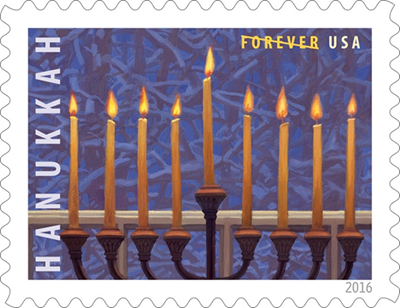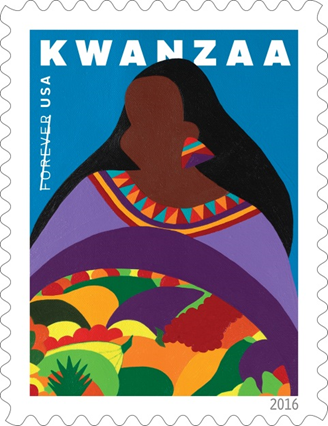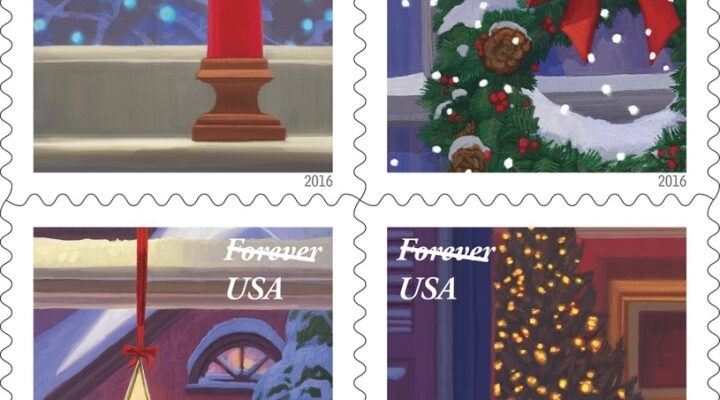Last Updated on November 19, 2016 by cassnetwork
WASHINGTON — The U.S. Postal Service has announced it is ready to deliver a lot of cheer — in the form of roughly 16 billion cards, letters and packages — this holiday season.
The Postal Service, the largest e-commerce deliverer, is projecting about 750 million packages will be delivered this holiday season, a 12-percent increase in volume compared to last year.
“Our customers can count on the entire Postal Service workforce to deliver their holiday gifts, cards and letters,” said Megan J. Brennan, Postmaster General and CEO. “With the Postal Service’s unrivaled network and expanded 7-day a week delivery window, we are uniquely qualified to provide the highest levels of customer service and we are confident that’s exactly what we’ll do this holiday season.”
Additionally, the Postal Service is hiring more than 35,000 seasonal employees to help process and deliver increased volumes and meet the needs of its customers.
While the Postal Service already delivers packages on Sunday in most major cities, following the success of past holiday seasons, it will expand Sunday delivery operations to all locations with high package volumes beginning Nov. 27. More than five million packages are expected to be delivered each Sunday in December. Mail carriers will also deliver packages on Christmas Day in select locations.
Busiest Mailing and Delivery Days
The Postal Service predicts that Monday, Dec. 19, will be the busiest mailing and shipping day for holiday packages, letters and cards. Thursday, Dec. 22, is expected to be the busiest delivery day for holiday packages, cards and letters. The Postal Service anticipates nearly 30 million packages will be delivered on the peak delivery day alone.
Skip the Trip and Ship Online
Dec. 19 will also be the Postal Service’s busiest day online with more than 7 million customers predicted to visit usps.com that day alone. Customers can avoid holiday hassles by visiting usps.com — the Postal Service’s website that will help make mailing and shipping easier than ever. Millions of customers will skip the trip to the Post Office altogether and take advantage of convenient online shipping this holiday season. Click-N-Ship and other online services allow customers to order free Priority Mail boxes, print shipping labels, purchase postage and even request free next-day Package Pickup from the mail carrier.
You can find 2016 holiday mailing and shipping deadlines here.
Here’s a look at some of the holiday stamps available this season from the U.S. Postal Service:
HOLIDAY WINDOWS
 The stamps reflect the simple pleasures of the wintry holiday season and feature a candle, a wreath, a star and a lighted tree.
The stamps reflect the simple pleasures of the wintry holiday season and feature a candle, a wreath, a star and a lighted tree.
Art director Ethel Kessler of Bethesda, MD, designed the stamps with original artwork by William Low of Huntington, NY.
Featuring snowy winter nights, these stamps demonstrate how windows everywhere play a role in the celebration of the holidays. We can delight in the snow when we’re inside, and can share our warmth and happiness with the outside world through simple panes of glass. Conveying both the joyful and the reverent spirit of the holiday season, these elegant stamps show the ways we observe traditions and spread cheer.
NATIVITY
 This beautiful stamp includes a brilliant star that stands out in both its illustration and in its meaning of Christmas,” said U.S. Postal Service Corporate Communications Vice President Janice Walker.
This beautiful stamp includes a brilliant star that stands out in both its illustration and in its meaning of Christmas,” said U.S. Postal Service Corporate Communications Vice President Janice Walker.
Art director Greg Breeding of Charlottesville, VA, designed the stamp with original artwork by Nancy Stahl of New York City.
The stamp art features an image of the Holy Family silhouetted against a dawn sky. As the baby Jesus lies in a straw-filled manger, Mary kneels to the right and Joseph stands to the left, holding a lantern. Over the scene, a bright star shines on the trio. The color palette features simple shades of blue and white highlighted by deep shadows.
Artists through the centuries have celebrated the Nativity in painting and sculpture. Carvings of Mary, Joseph, and the baby Jesus, often accompanied by an ox and a donkey, date back at least to the fourth century. St. Francis of Assisi is credited with creating the first crèche in the 13th century. In 1223 in a cave near a small village, he set up a manger as a visual way to deepen the message of his sermon on the birth of Jesus.
Today Nativity scenes remain the centerpieces of many church and family devotions during the Christmas season.
HANUKKAH
 The U.S. Postal Service’s new Hanukkah Forever stamp features a warm, elegant illustration of a holiday menorah in the window of a home. The eight nights and days of Hanukkah begin on the 25th of Kislev in the Hebrew calendar, a date that falls in late November or December. In 2016, Hanukkah begins at sundown Dec. 24.
The U.S. Postal Service’s new Hanukkah Forever stamp features a warm, elegant illustration of a holiday menorah in the window of a home. The eight nights and days of Hanukkah begin on the 25th of Kislev in the Hebrew calendar, a date that falls in late November or December. In 2016, Hanukkah begins at sundown Dec. 24.
“The Hanukkahstamp … honors a religious observance that is more than 2,000 years old — and how appropriate that the word itself — Hanukkah — means ‘dedication’ in Hebrew,” said U.S. Postal Service Chief Operating Officer and Executive Vice President David Williams. Artist William Low, of Huntington, NY, worked under art director Ethel Kessler of Bethesda, MD, who designed the stamp.
Hanukkah is a transliteration or change of letters of the Hebrew word as written in the Roman alphabet. There are various spellings, though the most widely used in the United States are Hanukkah and Chanukah.
Hanukkah is the Hebrew word for “dedication.” Tradition relates how a miracle took place during the rededication of the Temple in Jerusalem, which had been desecrated by conquering armies. The sacramental oil, thought to be enough for only one day, burned for eight days.
The miracle of the oil is at the heart of the ritual of the lighting of the hanukiah a menorah — candelabra — with nine branches, eight that hold candles representing each of the eight nights and days of Hanukkah, and the ninth, the shamash or “servant,” used to light the other candles. The hanukiah, used only at Hanukkah, traditionally was placed for all to see at the entrance of the home. At times in history when it was not safe for Jewish families to make a public declaration of faith, the menorah was set instead in a prominent place inside the home. Today in the U.S., many families have renewed the tradition of displaying the menorah in windows during the holiday.
Hanukkah is a time for gatherings of family and friends with feasting, games and other activities. Foods like latkes — potato pancakes — and sufganiyot — deep-fried doughnuts — are traditional. After the lighting of the candles, there may be singing and a gift exchange. Children play a game called dreidel. Competing for a pot of chocolate coins, nuts, pennies or other prizes, each player takes turns spinning the dreidel, a four-sided top with letters on each side. The letters form an acronym for the Hebrew saying “A great miracle happened there,” referring to the miracle of the oil. Depending on the outcome of the dreidel’s spin, the player either takes from or gives to the pot. The game ends when one player has won all the treats.
KWANZAA
 Kwanzaa, an annual non-religious holiday taking place over seven days from Dec. 26 to Jan. 1, brings family, community and culture together for many African-Americans. This year, Dec. 26 marks the 50th anniversary of the widely celebrated holiday.
Kwanzaa, an annual non-religious holiday taking place over seven days from Dec. 26 to Jan. 1, brings family, community and culture together for many African-Americans. This year, Dec. 26 marks the 50th anniversary of the widely celebrated holiday.
“Kwanzaa celebrations focus on the importance of family, community and culture, and reflect some of the core values of African culture,” said U.S. Postal Service Deputy Postmaster General and Chief Government Relations Officer Ronald Stroman. “The stamp’s bold colors depict a young African-American woman as the embodiment of Africa, with her dress collar and matching earring featuring an African design. The image shows her holding a large purple bowl overflowing with fruits and vegetables, symbolizing the abundance of African first harvest celebrations that inspired the creation of Kwanzaa,” Stroman added, referring to the work of stamp artist Synthia Saint James.
Created in 1966, Kwanzaa draws on African traditions, deriving its name from the phrase “first fruits” in Swahili, a widely spoken African language. It has its origins in celebrations that occurred across the African continent in ancient and modern times. Kwanzaa synthesizes and reinvents these traditions as a contemporary celebration of African-American culture.
Each year, millions of African-Americans gather with friends and family around a table set with the mkeka — a straw mat symbolizing the history of African-Americans. They light seven candles known as the mishumaa saba, and share in a feast that celebrates their common heritage. Kwanzaa is a festive occasion to rejoice in the prospect of health, prosperity and good luck in the coming year, while also recalling the past and its role in future happiness.
This is the sixth stamp design issued by the U.S. Postal Service in celebration of Kwanzaa. The first Kwanzaa commemorative stamp was issued in 1997. New designs also were issued in 2004, 2009, 2011 and 2013.
FLORENTINE MADONNA AND CHILD
 Featuring the Florentine Madonna and Child, from a 15th-century tempera-on-panel painting in the Widener Collection at the National Gallery of Art in Washington, DC. The painting is dated to circa 1470, and its anonymous artist is known only as “a Follower of Fra Filippo Lippi and Pesellino.”
Featuring the Florentine Madonna and Child, from a 15th-century tempera-on-panel painting in the Widener Collection at the National Gallery of Art in Washington, DC. The painting is dated to circa 1470, and its anonymous artist is known only as “a Follower of Fra Filippo Lippi and Pesellino.”
Art historians have long sought to identify the artist who created this painting. Early in the 20th century, the painting was attributed to the Florentine artist Pier Francesco Fiorentino, but not long after, the painting was seen as the work of an anonymous artist who had created a large number of paintings in the same style.
Although some museums still refer to the artist as “Pseudo-Pier Francesco Fiorentino,” scholars have recently taken a different approach and concluded that the artist was heavily influenced by two prominent 15th-century Florentine artists, Fra Filippo Lippi and Francesco Pesellino. The painting on this stamp is believed to be based on a Pesellino painting, now in the Musée des Beaux-Arts de Lyon in France, which shows a very similar Madonna and Child against a different background. For that reason, the National Gallery of Art refers to the artist as “a Follower of Fra Filippo Lippi and Pesellino.”
Clad with a white veil over her head and a red garment and blue cloak, both trimmed in gold, a haloed Virgin Mary gazes downward and to the right, looking at a blond, haloed Christ child while placing her right hand on his shoulder. The Christ child looks directly at the viewer. The position of the thumb and forefinger of his left hand suggests to some art historians that the painter may have intended to show him holding a symbolic object, although the painting in France believed to be its source shows the Christ child making the same gesture.
Behind both of them is a hedge of pink and white roses, with blue sky visible through thorny, leafy stalks.
Similar paintings, presumably by the same artist or workshop, are in the collections of many museums in other cities, including Baltimore, Philadelphia and London. Art historians have speculated that the painter may have had preparatory drawings or close copies of the works of the masters he imitated, and that a relationship may have existed between the workshops of those artists and this anonymous painter.
SOURCE: News releases from US Postal Service






